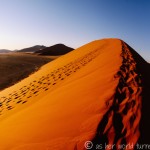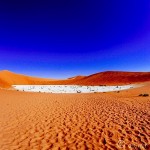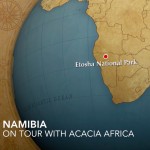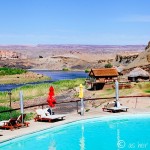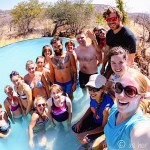Departing Swakopmund, we head south towards the biggest, oldest sand dunes in the world at Namib Naukluft Park. But it’ll take us a few hours to get there, and a big perk of traveling via overland tour is stopping along the way to admire scenery between destinations. Today’s post focuses on the quirky and unexpected sights that travelers encounter while driving through Namibia.
This first batch of photos is simply scenic shots from the road:








We pass the hours reading, listening to music / podcasts, napping, and snapping photos of the impressive landscape outside our windows. It feels like a moment out of time — we are in limbo, and these hours belong to us with no pressure to do work or be productive (says the girl with a travel blog who edits photos and writes posts like it’s homework — fun homework! — on a nightly basis). I love long driving days.


Okay, now for the points of interest along this route.
See this cave below? In 1940, two German geologists (Henno Martin and Hermann Korn) lived there for two years to avoid internment during WWII. At that point in time Namibia was governed by South Africa, and South Africa followed the United Kingdom’s lead by declaring war on Germany that year. So these two German geologists decided to hide out in this desert cave in Kuiseb Canyon rather than risk being imprisoned in camps like many fellow German men were at that time in South Africa and Namibia. In 1957 Henno Martin wrote a bestseller called The Sheltering Desert about their time in the cave.

We pass a sign for the Tropic of Capricorn, which is one of those demarcations I can never remember the significance of. So thank you, Wikipedia — the Tropic of Capricorn is the southernmost latitude where the sun can be directly overhead. South of this point, the sun passes through the sky at an increasingly lower angle.


These guys are such good sports anytime I ask to take a group photo.

Around lunchtime we stop at a village called Solitaire — it’s got a gas station, post office, general store, lodge, and bakery known for apple crumble (more on that in a moment).

This place has so much character — there are a dozen junkyard vehicles scattered around the property and, in some cases, they’re partially buried in sand. They make for great photo opportunities.




Here’s a case of desert graffiti — the offenders creatively used cacti as a canvas:

But the highlight of this place is the bakery. It opened over 20 years ago when a Scottish guy named Percy Cross “Moose” McGregor moved here to sell baked goods including his piéce de résistance, apple strudel. Soon enough word of his recipe spread and tourists began stopping in Solitaire just to get a slice of this famous crumble.

I can personally verify this is the real deal — it’s delicious. Although if you’re not a fan of apple desserts, there is a case full of freshly baked cookies and bread items to tempt your willpower. Also cheesecake.
Sadly Moose passed away in January of 2014, just eight months before our visit. But his recipe lives on. A HuffPo writer attempted to recreate the recipe so if you’d like to try it at home, go ahead. And then invite me over so I can tell you how close you are to the real thing.

That night we pitch our tents at Sesriem Camp. We’re treated to a lovely sunset.




And there is a full moon tonight!



Juliana continues to spoil us — following dinner, she whips up amarula sauce (made from liquor of the same name; it is deliciously sweet) and canned peaches to go with vanilla ice cream. Those three ingredients together are mouth-watering. I laugh at how remarkable this is — we are eating ice cream sundaes in the middle of the Namibian desert.

Oh man, apple crumble AND ice cream in the same day? You’d think we climbed a sand dune or something to earn that. (Check back tomorrow and the day after for more details.)
I visited Namibia on a 12-day tour from Windhoek to Cape Town with Acacia Africa. They discounted my tour in exchange for blogging and photography; opinions are my own.

